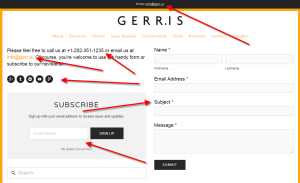A subscription box is a recurring delivery of boxed niche products as part of a marketing strategy and product distribution strategy to offer consumers additional value and a unique experience.
The industry has gained remarkable traction since the first subscription box business came to light in 2004.
According to McKinsey, the market for subscription e-commerce box services is as big as $ 15 billion.
The most extensive online subscription businesses generated $ 7.5 billion in combined sales in 2018, up 30% from 2017. And as data from Zuora shows, revenue among subscription businesses grew roughly 5x faster than both the retail sector and the S&P 500 from January 2012 through June 2019.
One of the main reasons consumers love subscription boxes is that they discover products they might not otherwise have. That allows customers to try products and brands risk-free.
That helps buyers to find unique products they prefer.
If you wish to start a subscription box business, you are in luck. In this article, I share useful insights to help you create a profitable subscription business.
How to start a profitable subscription box company
The first step to starting your subscription box business is to ensure that it serves a unique customer need.

Free-Photos / Pixabay
As Garry Vee said, the market always wins. Imagining the world how it should be might be an excellent concept for theoretical projects. But entrepreneurs that thrive and flourish make their customers the center of decision-making. They understand that it doesn’t matter how fancy your service or technology looks; if it’s not of use, it’ll not be in use.
Hence, you must do requisite market research to understand better the company you want to create. Such careful market research can help you understand market opportunities, trends, preferences, competition outlook, pricing dynamics, and much more.
Let’s break this process down into actionable steps:
Step 1: Develop a well-researched subscription box business idea.
There are numerous subscription box businesses these days – from fashion, beauty, food, home, wellness, books, kids to pets, and so on. You can convert any recurring need people have into a subscription box business.
Listen to the frustration of the people around you. Find out what they are complaining about that you can address. When you have identified the market opportunity for your subscription box business, then you’re set to dig deeper:
- Why is the issue persistent?
- How do people currently solve this problem?
- What can you do better than the players on the ground?
When you have answers to these questions, then you are ready for the next step in this phase of creating your subscription box business.
Step 2: Set the right price for your subscription box and create an MVP.
Following your market research and defining your type of subscription box business, the next step is to determine how much you will price your product or service.
Pricing is a crucial aspect of every business, and we shall discuss that in more detail in the next point. You need to choose the pricing model that makes sense for you and your stakeholders.
Some people might want to start with freemium (free service delivery) and progress to premium (paid service delivery). There is no single, universally accepted pricing strategy. Your decision will hinge on your market and product or service offering.
However, the caveat is that you should make sure your pricing is not too high that your customers cannot afford your subscription box and not too low that you incur negative revenue. By the way, consider using invoicing tools like WaveApps to ensure seamless payment collections.
And, of course, you want to start with a small version of your subscription box business. As Eric Ries defined it in his book Lean Startup, a Minimum Viable Product (MVP) is a product version with just enough features to be usable by early customers who can then provide feedback for future product development.
A focus on releasing an MVP means that you potentially avoid lengthy and unnecessary work. So instead of going full throttle on creating your subscription box business, use Ries’ advice and build your subscription base gradually with insight from the market.
Step 3: Build your subscription box tribe.
Peter Drucker says that because a business aims to create a customer, the business enterprise has two–and only two–essential functions: marketing and innovation.
Think about it. If a tree fell in a forest and nobody was there to hear it, did it make any sound?
When you understand what product or service you want to offer your customers and how much you will charge for your offering, the next step is to market your subscription box business.
You could start by creating a beautiful landing page with great functionalities to help your customers quickly subscribe to your offer. Also, you have to get good with customer service. Subscription businesses thrive on excellent customer service and a robust mailing list.
The first step to optimizing customer service is to meet prospective clients where they are. And nowadays, that could be Social Media.
Create the right Social Media presence for your business. Focus on targeting (and re-targeting!) people that need your service. Use tools such as Canva and Buffer to optimize your Social Media game.
Equally vital, get extremely good at branding your business from the very beginning.
Many entrepreneurs often see branding as an afterthought they can tack to the end of a venture to secure a sale. But branding is an integral part of a business, and a critical part of branding is consumer interaction and quality delivery. Setting customer expectations and meeting them is vital.
Do you have a brand strategy that will define your brand’s purpose and what it stands for? What are your brand values, brand mission, and brand vision?
Making your subscription box businesses profitable depends on your ingenuity
“The single necessary and sufficient condition for a business is a paying customer.” – Bill Aulet, the Managing Director of the Martin Trust Center for MIT Entrepreneurship.

stevepb / Pixabay
A question is asked on whether a subscription box business is profitable or not.
Unfortunately, there is no definitive answer to that question. Your success or failure depends on your business model.
Think about Birchbox, for example. According to CNBC, back in 2010, Katia Beauchamp and her co-founder Hayley Barna were having difficulty convincing brands to join their newly formed subscription service — offering five to six curated beauty products flat monthly fee. The customer base was not yet there, and the business model untested. Today, Birchbox can boast of more than 1 million subscribers, 2.5 million active customers, 500 beauty and grooming brands, and a global presence.
That said, it’s worthy of note that the Venture Capital market for the subscription box business looks bright. After a decline to $ 318 million last year in 2018, the lowest mark in at least four years, U.S. venture capital funding for subscription boxes rose to $ 426 million in 2019, according to PitchBook.
In a nutshell, the success of your subscription box business depends on your business model.
So how do you create a sustainable business model?
The business model canvas developed by Alex Osterwalder is considered the most comprehensive template to help create a hypothesis on your profitability in nine different parts. These include the essential resources and critical activities of your value chain, your value proposition, customer relationships, channels, customer segments, cost structures, and lastly, your revenue streams.
It helps you structure how to execute the business idea objectively and shows your competitive advantage over your rivals.
How to manage chargebacks and disputes for your subscription box business
Every e-commerce business faces chargebacks and payment disputes. Again, there is no single reason why a subscription box business can get chargebacks and disputes – they happen for different reasons and categorize your business as high risk.

JESHOOTS-com / Pixabay
Among the most significant complaints from customers who file chargebacks and disputes against a subscription box vendor are that customers think the subscription box will include specific items and are disappointed when the membership ends up falling short of their expectations. Another reason for chargebacks and disputes is when a subscription box company issues “products not as described” to customers.
You can use technology tools such as Chargeflow.io, the world’s first AI-powered chargebacks and disputes automation tool, to mitigate this threat. Chargeflow.io helps you not only minimize the risk of getting chargebacks, fraud, and disputes but also helps you fight them when they occur. With their success-based pricing, if you don’t win, then the service is free.
Chargebacks are an existential business threat today, and you must NEVER leave your chargebacks and disputes management to chance.
Business & Finance Articles on Business 2 Community
(95)
Report Post







